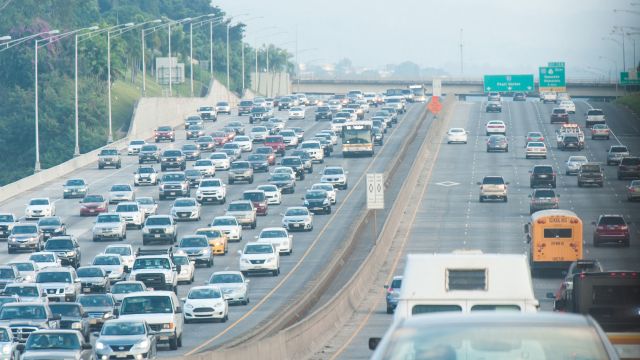You don’t even want to think about it—the afternoon gridlock that turns H1 Westbound into a parking lot, causing hours of stress, anxiety and frustration to countless Hawaii drivers. There are memes that tout: “I’d get on H1 driving west at 4 p.m. for you.” That’s got to be true love.
Even trying to avoid the traffic is hard because a minor accident, film shoot or construction project could be disastrous to what should be a short drive. With the rail still years away, reliable public transportation isn’t possible to keep the number of cars on the road to a minimum.
Don’t despair! There are ways to make your commute bearable, and maybe enjoyable, even in the worst traffic. One way to get started is learning mindfulness techniques.
Mindfulness matters
“That definition of mindfulness is to be in the present moment, aware of the internal and external experience, on purpose without judgment,” explains Thomas Cummings, PhD. Dr. Cummings is a psychologist who runs Mindful Matters Wellness Center in Kailua. In addition to his work as a psychologist, Cummings is also a yoga instructor, leading classes out of his Kailua office.
When it comes to de-stressing your drive, the best defense is a good offense in Cummings’s mind. Before even stepping foot in a car, consider developing your own meditation routine. Practicing meditation regularly allows individuals to be calmer and less reactive. According to Cummings, if “you just develop a regular practice of meditation the inevitable traffic and the unpreventable don't stress you out.”
In addition to helping individuals be calmer and more mindful in everyday life, there are physiological benefits to regular meditation as well, including “lower blood pressure, lower heart rate, respiration rate,” says Cummings. Some research has also shown benefits for reducing pain and improving mood.”
To get started, Cummings has the following advice: “Meditation is not a verb. It's a noun. You don't meditate on something. You meditate. There's no object. By that, in mindfulness meditation, we focus our attention on one thing, and every time our mind wanders, we bring it back to that one thing.”
That’s one of many techniques to start meditating. Another is to sit calmly and focus on your breathing without trying to control the breath. Just notice it. If those suggestions aren’t concrete enough, Cummings also recommends finding a free app that can provide timed or guided meditation.
For those unavoidable moments when you are stuck in traffic, Cummings suggests asking yourself the following: “’Can you do anything about it? What good does it do to get all stressed out about it?’" If your answers are, “no” followed by “none,” try to take a deep breath and find a way to be mindful instead.
“What you could do while you're stuck in traffic is what I call stealing moments of your life back. Rather than planning, rather than fretting and swearing, and getting all upset, you could do the exact opposite. You could meditate, albeit with your eyes open,” says Cummings.
Some forms of open-eyed meditation include counting breaths while focusing on the sensation of air moving in and out through your nostrils, and the gentle rise and fall of your abdomen. You might also try to become hyper aware of your surroundings visually and try to take in everything that is going on around you without using judgment. “I recommend people drive like this,” says Cummings.
Consider enrichment activities
Another alternative to stressing out in bad traffic is to try to use that time doing things you enjoy. With the advent of Bluetooth technology, most newer cars have the option to make hands-free phone calls (remember, it’s illegal to hold your phone while driving in Hawaii). Instead of letting your anxiety rise, use your time in the car to connect with friends and family, especially those on the Mainland who you might not get to see often.
You can also use drive time to listen to audiobooks or podcasts on subjects you’re interested in but might not otherwise have time to explore. Some commuters even use the time to learn another language with audio programs. Time in the car doesn’t have to be stressful time wasted. It can be a mindful space to learn new things, reach out to loved ones and maybe even connect with yourself.






